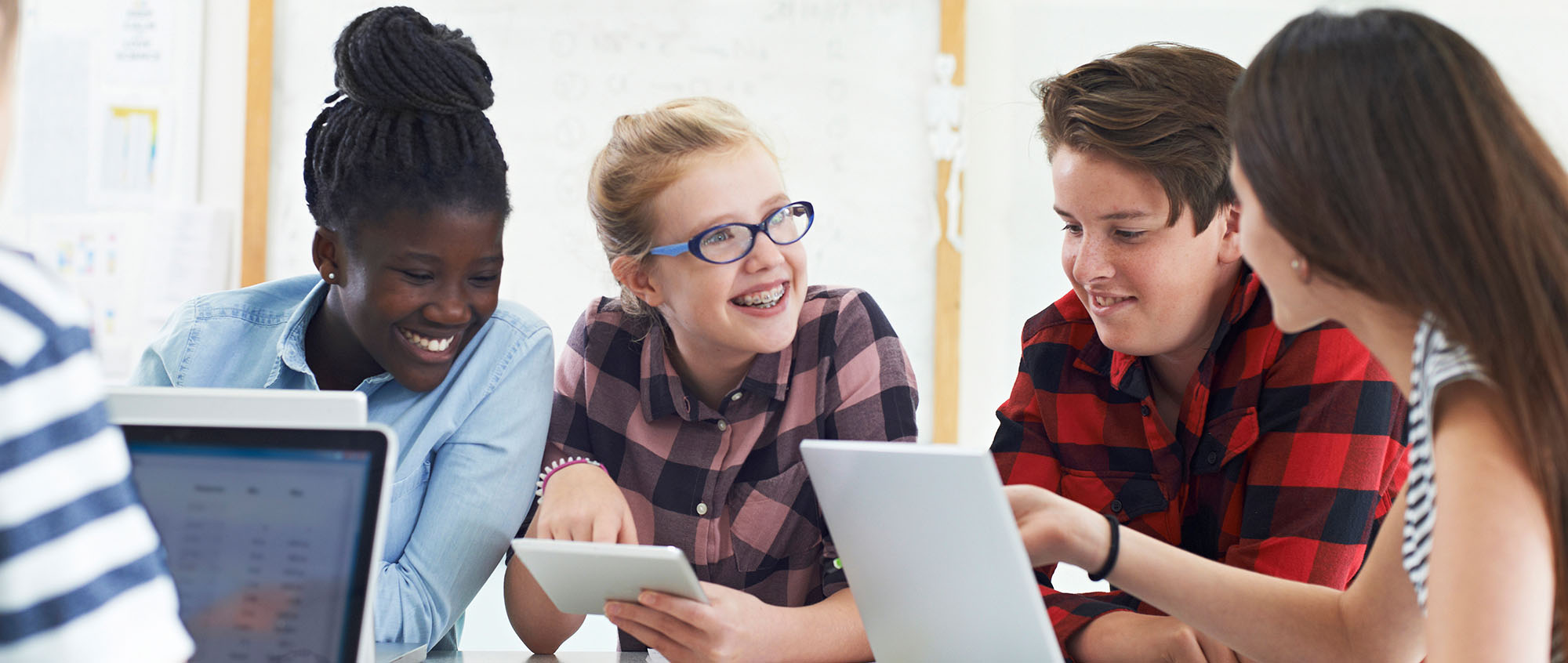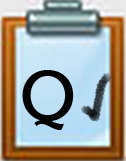Q3. Speaking Out About Global Issues
Introduction
In previous Quests, you learned why Global Collaboration skills are important and you took an opportunity to develop some communication and cultural skills. Now we are going to look at some global issues that students and adults can work on together.
Global citizens can do many things to help with these issues, such as campaigning to raise awareness and action, inventing new solutions or innovating through new practices. Global Collaborators work with others and often with experts to making the world a better place.
In this Quest, you will look at inventing, innovating, and campaigning around one of the United Nations Sustainable Goals. These are 17 goals adopted by the UN (United Nations) to improve living conditions all around the planet. Once you have researched this goal, you will practice your speaking skills by creating and sharing a short video about it by using a video recording tool as your teacher directs. The video can be reviewed by other students as well as shared with other classrooms in your school or around the world. You will contribute to a campaign for awareness by the end of the Quest!
I Can Statements
- explain a UN Sustainable Goal and summarize the importance of the goal
-
create a short video that explains this to others
-
use excellent speaking and recording techniques to make others aware of the issue and what needs to be done
Key Vocabulary
Key Vocabulary
Asynchronous Communication: To talk with another person or group of people by posting an idea online and getting responses at a later time. This could happen with a discussion board or by posting videos.
Campaign: To create a media-driven product, such as a public service video, and email or Go Fund Me drive, or social media effort to raise awareness or change behavior.
Innovate: To make changes in something established to help solve a problem. Changes can be in behavior or processes.
Invent: To create something new; in this case, something that will help solve a problem.
Monotone: To speak in a flat voice that does not modulate, and that doesn't convey enthusiasm or interest.
Synchronous Communication: To talk to another person or a group of people live in a real-time conversation, either face-to-face or using a webcam.
United Nations: An international organization formed in 1945 to increase political and economic cooperation among its member countries and search for solutions to common world problems.
UN Sustainable Goal: One of 17 goals set by the United Nations with a target date of 2030 to help eliminate poverty and provide solutions to environmental problems.
Play the Vocabulary Game below to practice the Key Vocabulary.
Vocabulary Game
You can change the Quiz mode to Match, Test, Learn, Flash Cards, Spell using the selection list at the bottom right of the activity that says "Choose a Study Mode." Direct Link
STEPS
1. Watch the video on the World’s Largest Lesson to learn about what one student can do to make a difference. Think about this: how can students innovate, invent, and campaign to make a difference in the world?
2. Visit this site and look at the summaries of each by selecting them from the colorful list on the right hand side of the page 17 Sustainable Development Goals from the United Nations.
- You and your teacher will identify one for you to investigate further, and when possible with a partner.
- You will be creating a short multimedia presentation about this goal a little later in the Quest where you will introduce the goal and why it matters (with your partner or on your own).
Assignment options (check with your teacher):
- Sign up with a partner for which Global Goal you will explore OR
- Your teacher will assign a Global Goal to each partner pair
- Several pairs can work on the same Global Goal and periodically collaborate to share their learning
Steps 3-5 Project Preparation - Outlining & Scripting
3. Do your research and take lots of notes. You will find using a graphic organizer, word processing document, or slide presentation program (Google slides or Microsoft PowerPoint) will be helpful.
- Find out more about the issue you are exploring on the Goal page for the item you selected.
- Review some facts and figures
- Read through the goal targets, and take some notes for your video. Also look at the Global Goals Posters to get a quick “snapshot” view of your issue.
- If you are working cooperatively with a partner or small group, make sure you do not repeat your partner’s information by sharing and communicating often as you do your research.
- When you are introducing the issue, your goal is to explain the problem to your audience.
- When you are explaining why it matters, you should be using some facts and figures from these websites to help your audience understand the scope of the problem and possibly sharing what work needs to be done on the issue.
4. Create a storyboard or an outline and write a short script to prepare for your presentation. If working with others be sure to identify who do each part.
- The sentence starters on the Speaking Skills Checklist may help you organize your thoughts.
- Each of your parts in the video should be a minute or less in length, so edit it carefully and practice several times until it flows well with a total time under two minutes.
- The total length of your video should be under two minutes, with a target goal of about a minute and a half total to keep the attention of your audience.
- Your script should include: introducing yourself (first name only) before beginning your narration. Your teacher will review your script before you move to the practice stage. Practice it several times until you and your partner can present it,
- Ask your teacher to review it when you feel you are done, and before making your video.
5. Use your notes to write a short script to explain what you are going to say in your video. The sentence starters on the Speaking Skills Checklist may help you organize your thoughts.
Steps 6-10 Speaking Skills Checklist and Practice
6. Review this Flip Rubric to help you plan on making an amazing video.
Then: Practice, practice, and practice some more. Review this Speaking Skills Checklist (copy it to your own drive, or download it as a Word file) and have your partner (or friend) be a coach and use it when you practice and then do the same for another partner or classmate.
- Use the checklist during the practices until you and your coach feel it is flowing well.
- Practice the transition if you are presenting or recording with others. Decide how the first person will introduce the second one. For example, “To help you learn more about ending poverty, my partner Sam will share some surprising information.”
- FYI: Flip Getting Started Guide for Students may be a helpful resource.
7. Select an appropriate and available recording tool.
- Check out the Video Recording information in 21things4students 17. Q3. Creative Communications; videos and audio options. One recommendation is for your teacher to set up a classroom account (using the Flip Getting Started: Educators tutorials if needed). Check with your teacher to select an appropriate video creation tool.
- WeVideo, Adobe Creative Cloud, Splice, Educreations, Screenpal (formerly Screen-O-matic)
8. Record your practice and review it, using the same checklist rubric from Step 6. Decide what you need to do to improve your performance on this video and continue practicing until you and your teacher feel you are ready to record.
9. Record your video. You and your partner will share the webcam for your video. You can switch places or both stay in the webcam view together. If you need to redo it to improve it, then do so.
10. Share your final video with your teacher and follow directions on how to share it with other classmates for feedback.
11. Feedback is very important. Not only do you want to communicate your complex ideas clearly and effectively, but to provide constructive feedback.
Constructive Feedback is a tool that is used to build things up, not break things down. It lets the other person know that you are on their side.
Review the slides below, and refer to the Commenting on Asynchronous Conversations document.
Constructive Feedback
12. Review and comment thoughtfully on at least three other videos in your class shared with you through Flip or in another way your teacher suggests.
13. How could you use this class video collection to raise awareness in your school or community about the UN Goals?
Completing this Quest
In order to successfully complete this Quest you will submit the following resources as your teacher directs:
- Creation of an outline for the video
- Write a script for your video
- Use of a ranking scale (+ check -) to practice speaking skills while rehearsing your video
- Creation of a two minute or less video on Flip or another tool
Check off this Quest on the 21t4s roadmap
I am ready for the next Quest Global Interaction
Additional Resources
The site listed below has fun activities and materials for educators, schools, clubs, camps, and for learning at home.
The World's Largest Lesson! UNICEF - Unesco
- Sustainable Development Goals in learning, from citizenship and justice to climate change and the environment to inspire students to make a difference.
- Also features on this site:
- The Journey of a Vaccine
- Become a Climate Changemaker!
- Designing for Climate Action (10 hours of activities)
Competencies & Standards
MITECS Michigan Integrated Technology Competencies for Students, and
1. Empowered Learner
c. Use technology to seek feedback that informs and improves their practice and to demonstrate their learning in a variety of ways
2. Digital Citizen
a. Cultivate and manage their digital identity and reputation and are aware of the permanence of their actions in the digital world
b. Engage in positive, safe, legal and ethical behavior when using technology, including social interactions online or when using networked devices
3. Knowledge Constructor
a. Plan and employ effective research strategies to locate information and other resources for their intellectual or creative pursuits
b. Evaluate the accuracy, perspective, credibility and relevance of information, media, data or other resources
c. Curate information from digital resources using a variety of tools and methods to create collections of artifacts or solving authentic problems
d. Build knowledge by actively exploring real-world issues and problems, developing ideas and theories and pursuing answers and solutions
6. Creative Communicator
d. Publish or present content that customizes the message and medium for their intended audiences
7. Global Collaborator
b. Use collaborative technologies to work with others, including peers, experts or community members, to examine issues and problems from multiple viewpoints
Websites and Documents
Websites
- 17 Sustainable Development Goals of the U.N.
- Adobe Creative Cloud for Students
- Educreations
- Flip Getting Started Guide for Students
- Flip Getting Started Guide for Educators
- Global Goals Posters
- Screenpal (formerly Screencast-O-matic)
- Splice
- WeVideo
- World's Largest Lesson! Unicef-Unesco
Videos from Outside Sources
- Sustainable Development Goals Video
- World's Largest Lesson pt 2 Video at the top of the page
21t4s Websites
21t4s Documents & Quizzes




